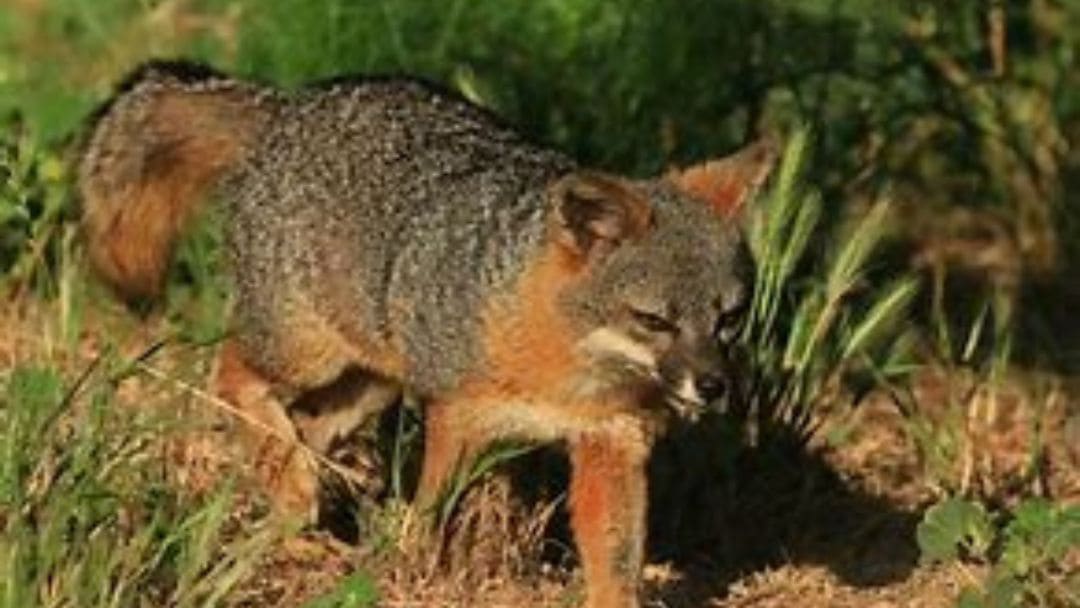Island foxes, diminutive island dwellers, showcase remarkable evolution, play a vital role in their ecosystem, and stand as a testament to successful conservation efforts.
Imagine a scattering of islands, like jewels, across the vast Pacific Ocean. Here, on these isolated lands, thrives a unique and fascinating creature: the Island Fox (Urocyon littoralis).
These diminutive foxes, smaller than most house cats, have become masters of their island homes, evolving distinct characteristics and playing a crucial role in the island ecosystem’s balance.
Let’s delve into the fascinating story of the Island Fox – their evolution, their ecological importance, and the remarkable conservation success story that brought them back from the brink.
Island Specialists: Evolving on Isolated Lands
Island foxes are true island dwellers, found exclusively on a handful of California’s Channel Islands. Over thousands of years of isolation, they’ve evolved into distinct subspecies, each perfectly adapted to the specific challenges of their island home. Here are some key adaptations:
- Island Dwarfism: One striking adaptation is their small size – a result of “island dwarfism.” This phenomenon occurs when larger animals evolve to be smaller on islands with limited resources.
- Unique Traits: Each island fox subspecies has developed unique traits to thrive in its specific environment. For example, the foxes on Santa Catalina Island have a particular fondness for marine prey, reflecting the abundant seafood resources around them.
These adaptations showcase the incredible power of evolution in shaping species for specific environments. Island foxes demonstrate how isolation can lead to remarkable diversification and specialization.
Guardians of the Island Ecosystem: Predators and Seed Dispersers
Island foxes play a crucial role in maintaining the delicate balance of their island ecosystems. They act as both:
- Predators: They help control populations of rodents and insects, preventing these herbivores from overgrazing island vegetation.
- Seed Dispersers: Island foxes often bury excess food, and some seeds within this buried food can germinate, promoting plant growth and island biodiversity.
Their presence ensures the health and stability of these fragile island environments.
A Fight for Survival: Conservation Success Story
The Island Fox’s story is not just about adaptation and ecological importance, but also about resilience. At one point, due to introduced predators like golden eagles and competition with invasive species like feral cats, these unique foxes faced near-extinction. However, their plight sparked a remarkable conservation effort:
- Captive Breeding: Biologists established captive breeding programs to ensure the survival of the remaining foxes and reintroduce them to their island homes when circumstances allowed.
- Habitat Restoration: Conservationists worked tirelessly to restore native island habitats, ensuring a healthy environment for the returning foxes.
- Invasive Species Removal: Through careful management programs, biologists removed invasive predators like feral cats, allowing the Island Fox populations to flourish once again.
These dedicated efforts paid off! Island fox populations began to rebound significantly. Several subspecies were successfully removed from the endangered species list, a testament to the power of conservation and the importance of protecting these irreplaceable island inhabitants.
The Island Fox’s journey from near-extinction to a symbol of successful conservation offers a ray of hope. It reminds us that even in the face of significant threats, dedicated conservation efforts can make a real difference for our planet’s unique and fragile ecosystems. As we continue our exploration of the captivating world of foxes, remember the Island Fox – a tiny titan with a remarkable story of evolution, ecological importance, and conservation success.
Island Fox FAQs: Unveiling the Secrets of the Tiny Island Dweller
1. Where do Island Foxes live?
Island foxes are found exclusively on a handful of California’s Channel Islands, making them true island dwellers. Their isolation on these islands has led to the evolution of distinct subspecies on each island.
2. Why are Island Foxes so small?
Island foxes exhibit island dwarfism, a phenomenon where animals evolve to be smaller on islands with limited resources. This small size allows them to survive on the resources available on their island homes.
3. How do Island Foxes help the ecosystem?
Island foxes play a vital role in maintaining the balance of their island ecosystems. They act as predators, controlling rodent and insect populations, and as seed dispersers, helping plants grow and spread.
4. What threats did Island Foxes face?
Island foxes faced near-extinction due to introduced predators like golden eagles and competition with invasive species like feral cats. Diseases also played a role in their population decline.
5. Are Island Foxes endangered?
Thanks to successful conservation efforts, several Island fox subspecies are no longer classified as endangered. Captive breeding programs, habitat restoration, and invasive species removal have all contributed to their population recovery. However, ongoing conservation efforts are still crucial to ensure their long-term survival.


